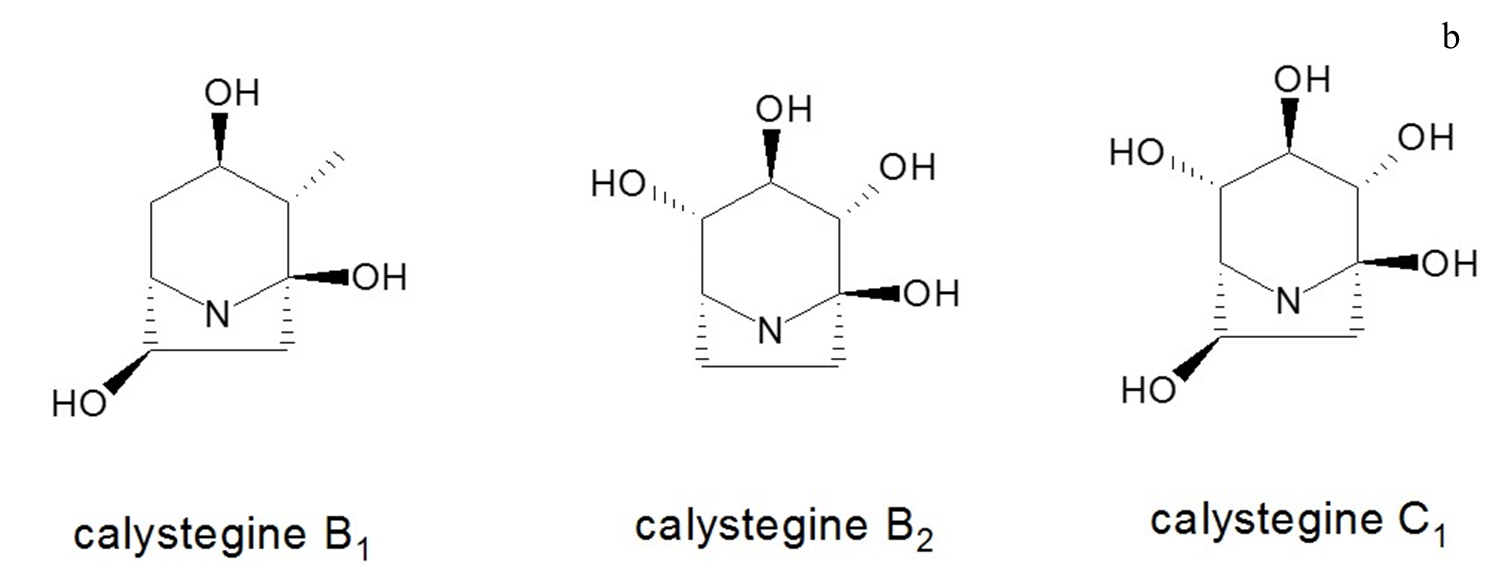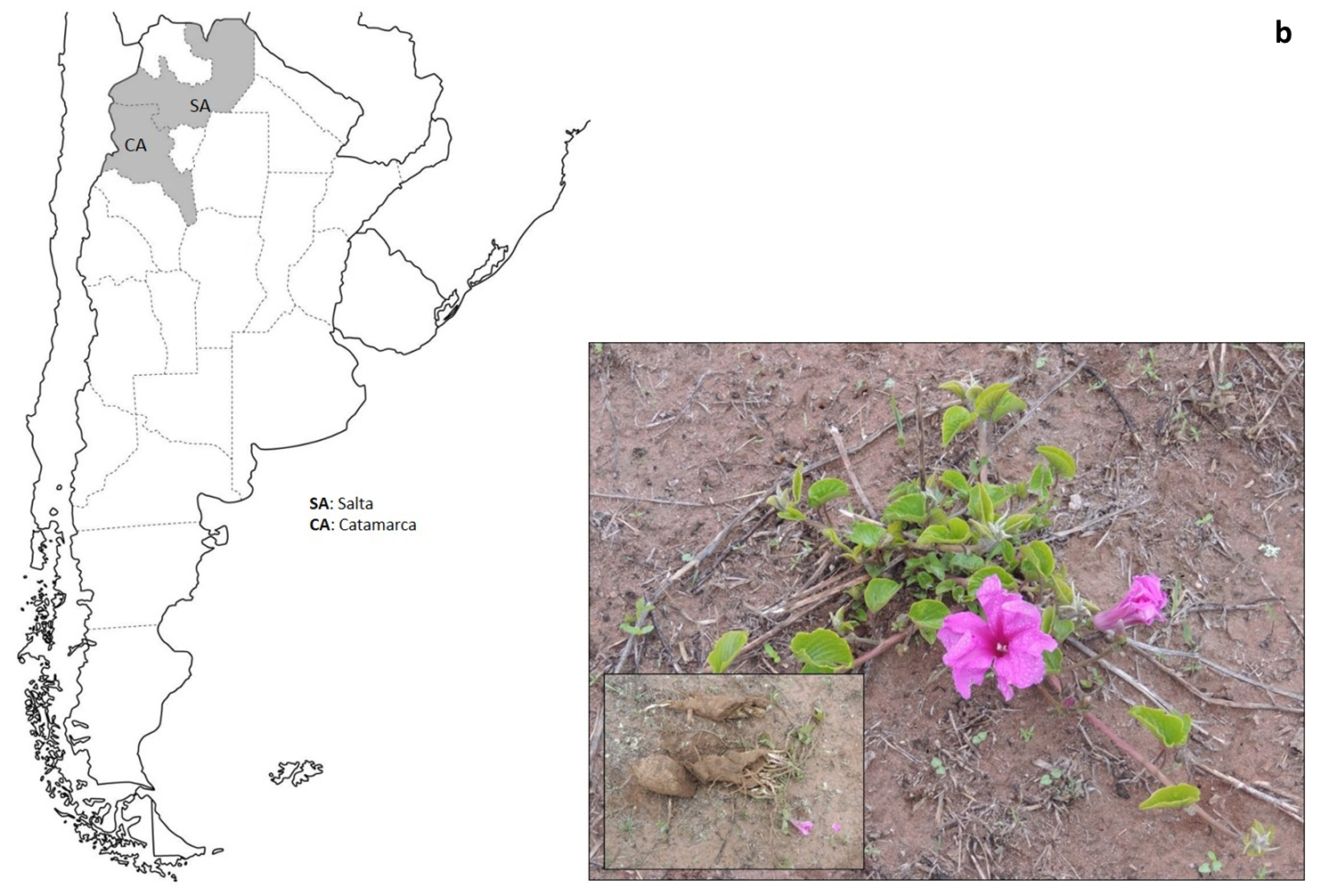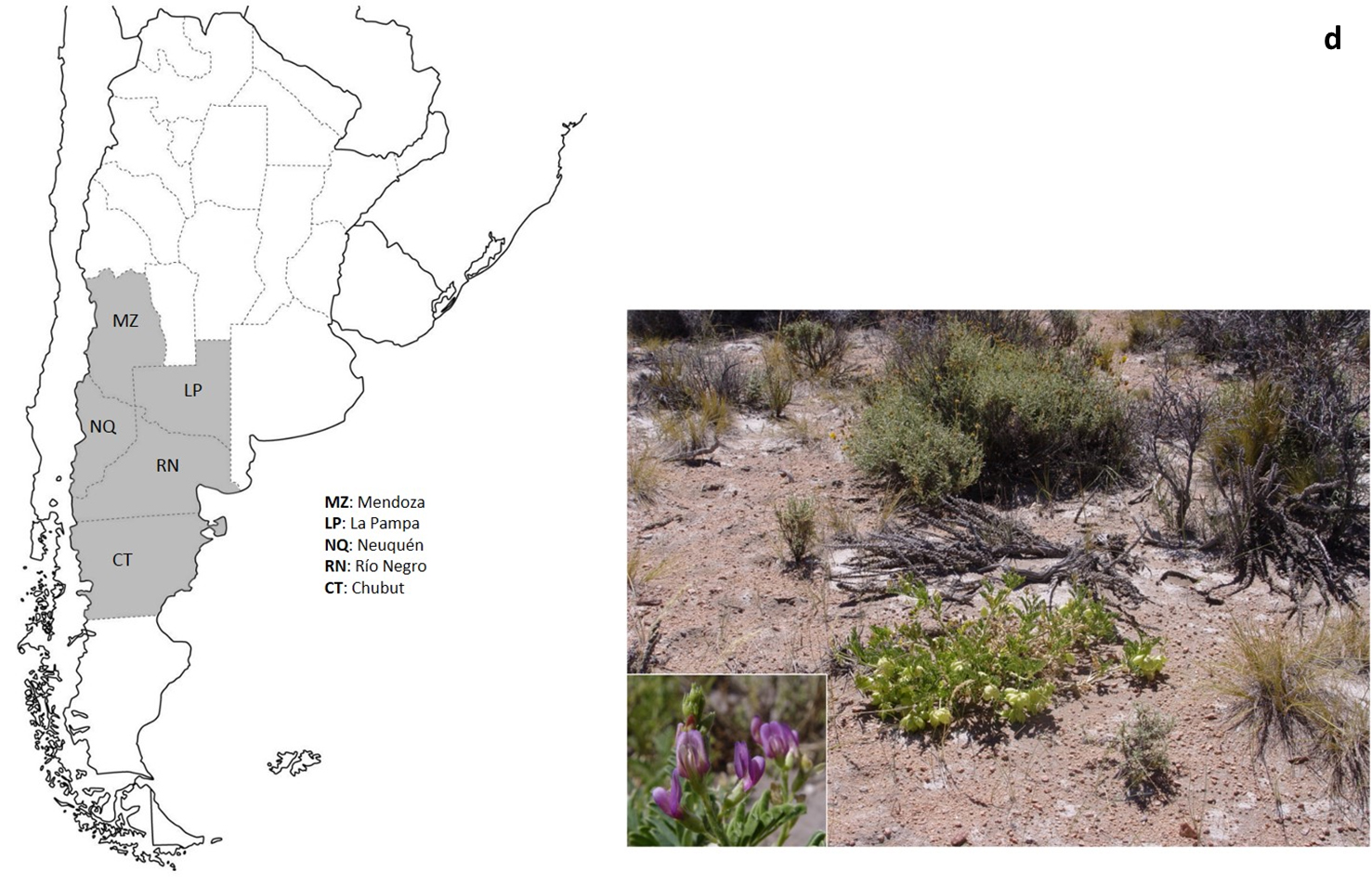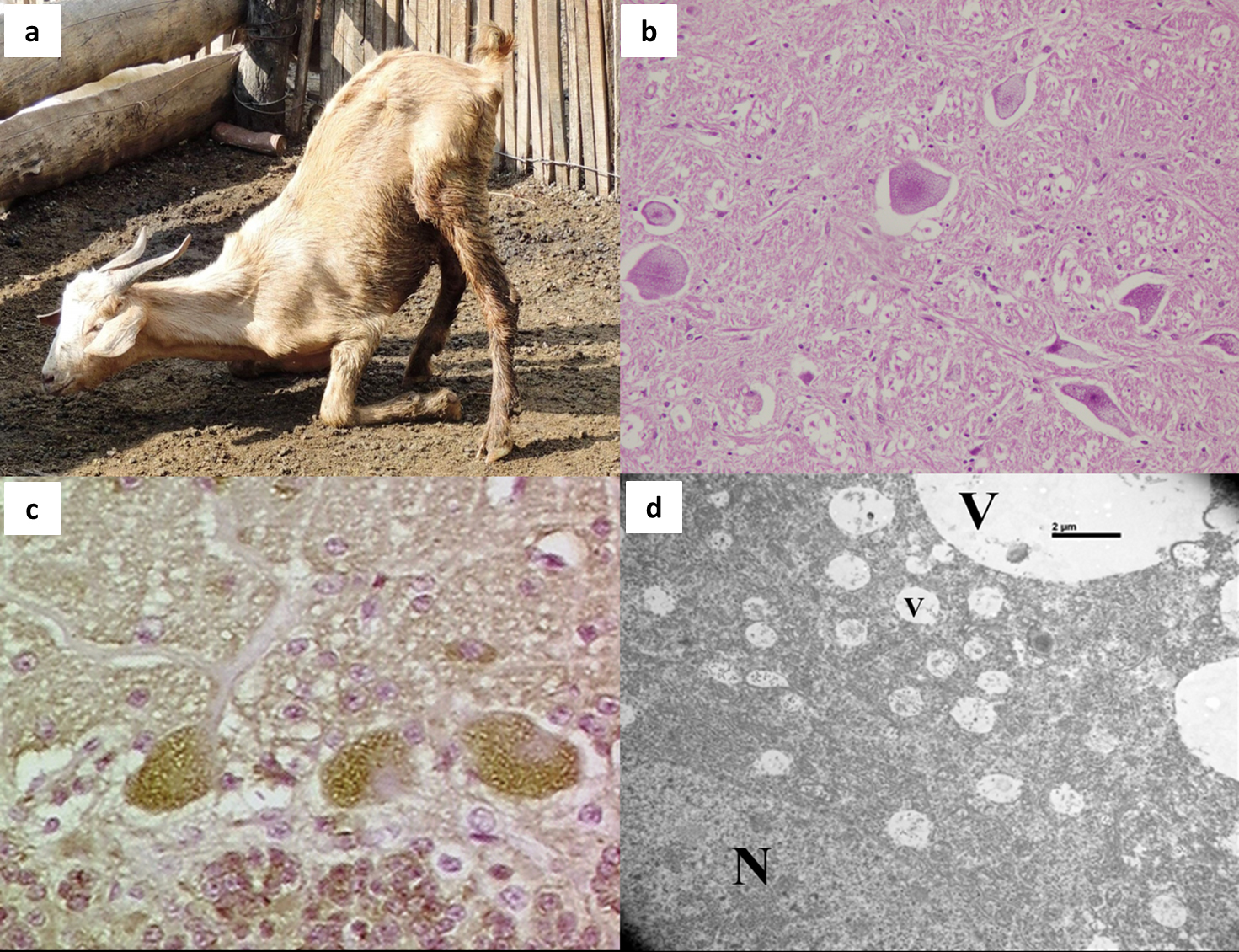Abstract
It is well known that several of the swainsonine-containing plant species found widespread around the world have a negative economic impact in each country. In Argentina, most of the information on the poisonous plant species that produce α-mannosidosis is published in Spanish and thus not available to most English-speaking researchers interested in toxic plants. Therefore, the aim of this review is to summarize the information about swainsonine-containing plants in Argentina, which are extensively distributed throughout different ecoregions of the country. To date, five species from three genera have been shown to induce α-mannosidosis in livestock in Argentina: Ipomoea carnea subsp. fistulosa, Ipomoea hieronymi subsp. calchaquina (Convolvulaceae), Astragalus garbancillo, Astragalus pehuenches (Fabaceae), and Sida rodrigoi (Malvaceae). These species contain the indolizidine alkaloid swainsonine, which inhibits the lysosomal enzyme α-mannosidase and consequently affects glycoprotein metabolism, resulting in partially metabolized sugars. The prolonged consumption of these poisonous plants produces progressive weight loss and clinical signs related to a nervous disorder, characterized by tremors of head and neck, abnormalities of gait, difficulty in standing, ataxia and wide-based stance. Histological lesions are mainly characterized by vacuolation of different cells, especially neurons of the central nervous system. The main animal model used to study α-mannosidosis is the guinea pig because, when experimentally poisoned, it exhibits many of the characteristics of naturally intoxicated livestock.
Key words
Argentina; guinea pig model; livestock; neuronal vacuolation; poisonous plants; swainsonine

 Thumbnail
Thumbnail
 Thumbnail
Thumbnail
 Thumbnail
Thumbnail
 Thumbnail
Thumbnail
 Thumbnail
Thumbnail
 Thumbnail
Thumbnail
 Thumbnail
Thumbnail
 Thumbnail
Thumbnail
 Thumbnail
Thumbnail








